As the demand for convenient and efficient cooking solutions continues to rise, the contact grill has emerged as a favorite among both European and American consumers. This compact and versatile kitchen appliance has not only transformed the way we cook but has also sparked a wave of innovation within the industry. In this article, we delve into the evolving landscape of the contact grill market, exploring the key factors that are shaping its growth and future.
I.TheRiseofContactGrillsinEuropeandNorthAmerica
The Contact Grill Market has seen a significant surge in popularity, particularly in Europe and North America. This rise can be attributed to a variety of factors that have combined to create a perfect storm for the growth of these countertop cooking appliances.
In Europe, the demand for contact grills has been fueled by a shift towards healthier cooking methods. Consumers are increasingly looking for alternatives to traditional grilling, which can sometimes result in higher fat content. Contact grills offer a more controlled cooking process, ensuring that food is cooked evenly and with less oil, thus appealing to health-conscious individuals.
Similarly, in North America, the contact grill market has seen a surge, with many attributing it to the growing interest in outdoor cooking. The popularity of barbecues and picnics has led to a search for more convenient and efficient ways to cook meats at home. Contact grills provide a compact solution that can be easily used indoors or outdoors, making them a convenient choice for those who love the taste of grilled food but lack the space or time for a full-sized barbecue.
The convenience factor is further enhanced by the ease of use and quick cooking times that contact grills offer. These appliances typically heat up within minutes and can cook a variety of foods, from steaks and burgers to vegetables and sandwiches, in a short amount of time. This has made them a staple in many modern kitchens, where busy lifestyles often dictate the need for quick and efficient cooking solutions.
Moreover, the rise of contact grills in both regions has been bolstered by marketing strategies that highlight their ease of cleaning and maintenance. With non-stick surfaces and removable parts, these grills are seen as a hassle-free option that reduces the time spent on kitchen cleanup after cooking.
European and American consumers also appreciate the versatility of contact grills. Many models come with adjustable heat settings, allowing users to control the cooking temperature to their liking. This feature is particularly appealing to those who enjoy experimenting with different cooking techniques or who have specific dietary requirements.
In terms of design, contact grills have evolved to cater to the aesthetic preferences of modern consumers. Sleek and stylish designs, often with digital displays and advanced features, have become a norm. These appliances are no longer just functional; they are also seen as a statement piece for the kitchen.
The market has also been influenced by the influence of celebrity chefs and cooking shows. The exposure to professional-grade cooking techniques and the use of specialized equipment, including contact grills, has inspired home cooks to invest in similar appliances to recreate those high-quality meals at home.
Furthermore, the availability of a wide range of contact grill models has contributed to their popularity. From entry-level models to high-end, professional-grade units, there is a contact grill to suit every budget and need. This diversity has ensured that the market caters to a broad audience, from the casual home chef to the seasoned grill master.
Lastly, the integration of smart technology has opened up new avenues for contact grill manufacturers. Smart grills that can be controlled via smartphone apps offer consumers the ability to monitor and adjust cooking temperatures remotely. This level of convenience and connectivity is expected to further drive the market’s growth as technology continues to evolve.
In conclusion, the rise of contact grills in Europe and North America is a multifaceted phenomenon that reflects changing consumer preferences, technological advancements, and a desire for convenience and health in everyday cooking. As the market continues to grow, manufacturers will need to stay attuned to these evolving trends to remain competitive.
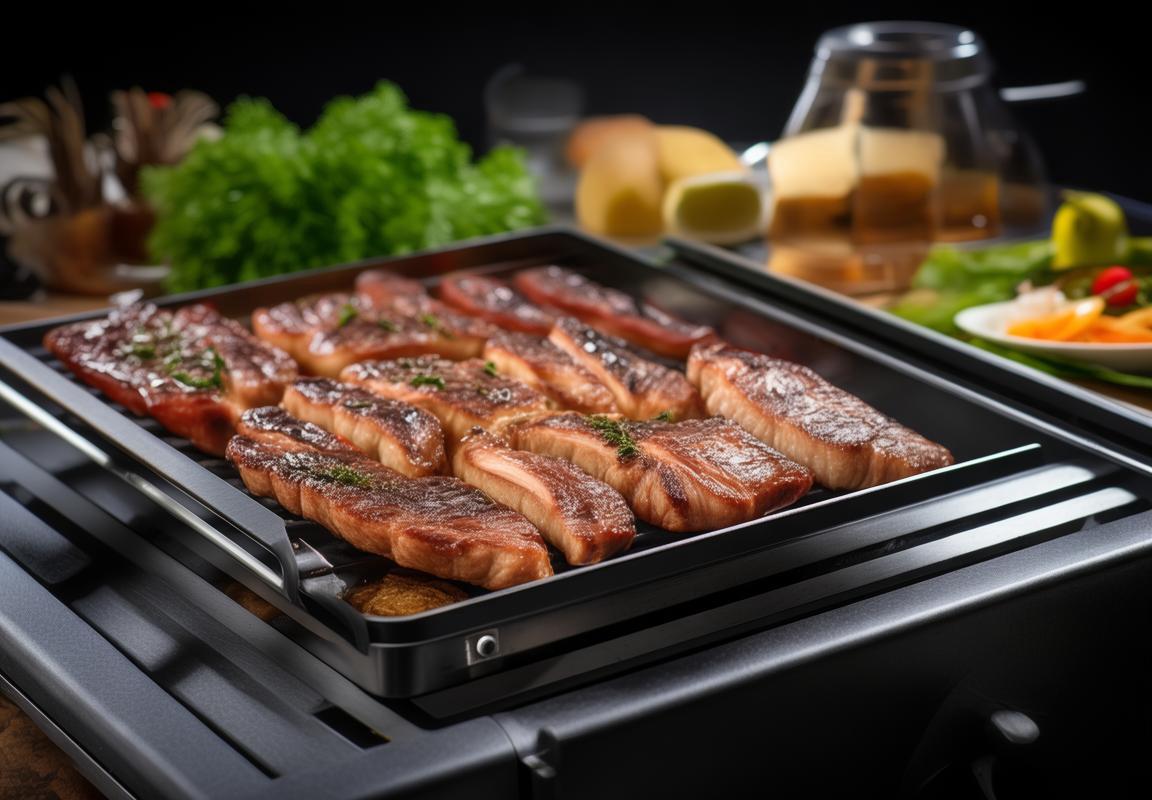
II.MarketDynamics:TrendsDrivingGrowthinContactGrillSales
The market for contact grills in Europe and North America has experienced a significant surge in recent years, driven by a combination of evolving consumer tastes and technological advancements. Here’s a closer look at the trends fueling this growth:
-
Health and Wellness Focus: As health consciousness grows, consumers are seeking healthier cooking alternatives. Contact grills offer a low-fat option compared to traditional grilling methods, as they cook food using a flat surface that reduces the need for excess oil.
-
Convenience and Speed: With fast-paced lifestyles, the convenience of quick and easy meals is paramount. Contact grills deliver both speed and ease of use, making them a popular choice for busy professionals and families.
-
Outdoor Cooking Trends: The popularity of outdoor living and the rise of tailgating and grilling culture have bolstered the demand for contact grills. These compact, portable appliances are perfect for cooking on the go, whether at a park, beach, or sports event.
-
Versatility in Cooking Options: Modern contact grills come with various attachments and features that allow for a wide range of cooking styles, from searing steaks to grilling vegetables. This versatility appeals to a broad audience looking for a multi-functional appliance.
-
Smart Technology Integration: The incorporation of smart technology into contact grills has become a game-changer. Features like temperature control, digital displays, and Wi-Fi connectivity enable precise cooking and provide a more interactive cooking experience.
-
Eco-Friendly Cooking Solutions: As environmental concerns grow, consumers are increasingly interested in eco-friendly products. Contact grills, being energy-efficient and reducing the need for open flame, align with these sustainability goals.
-
Rising Popularity of Meatless Diets: With the rise of vegetarian and vegan lifestyles, contact grills have become a preferred cooking method for those looking to prepare plant-based foods without the mess of traditional grilling.
-
Social Media Influence: The power of social media has played a crucial role in promoting contact grills. Influencers and food enthusiasts often showcase their delicious meals prepared on these appliances, driving interest and sales.
-
Competitive Pricing: Manufacturers have responded to the growing demand by offering a wide range of contact grills at various price points, making them accessible to a broader consumer base.
-
Innovation in Materials: Advances in materials science have led to the development of non-stick surfaces that require less maintenance and cooking oil, further enhancing the appeal of contact grills.
-
Enhanced Safety Features: Safety has always been a concern when it comes to cooking appliances. The introduction of features like automatic shut-off timers and cool-touch handles has made contact grills safer and more user-friendly.
-
Globalization of Cuisines: The globalization of cuisine has influenced the contact grill market, with consumers seeking out appliances that can replicate dishes from around the world. This has spurred the development of contact grills with adjustable heat settings and cooking surfaces.
The dynamic market for contact grills in Europe and North America is a testament to the ever-changing landscape of consumer preferences and technological progress. As these trends continue to shape the industry, manufacturers must stay ahead of the curve to meet the evolving needs of their customers.
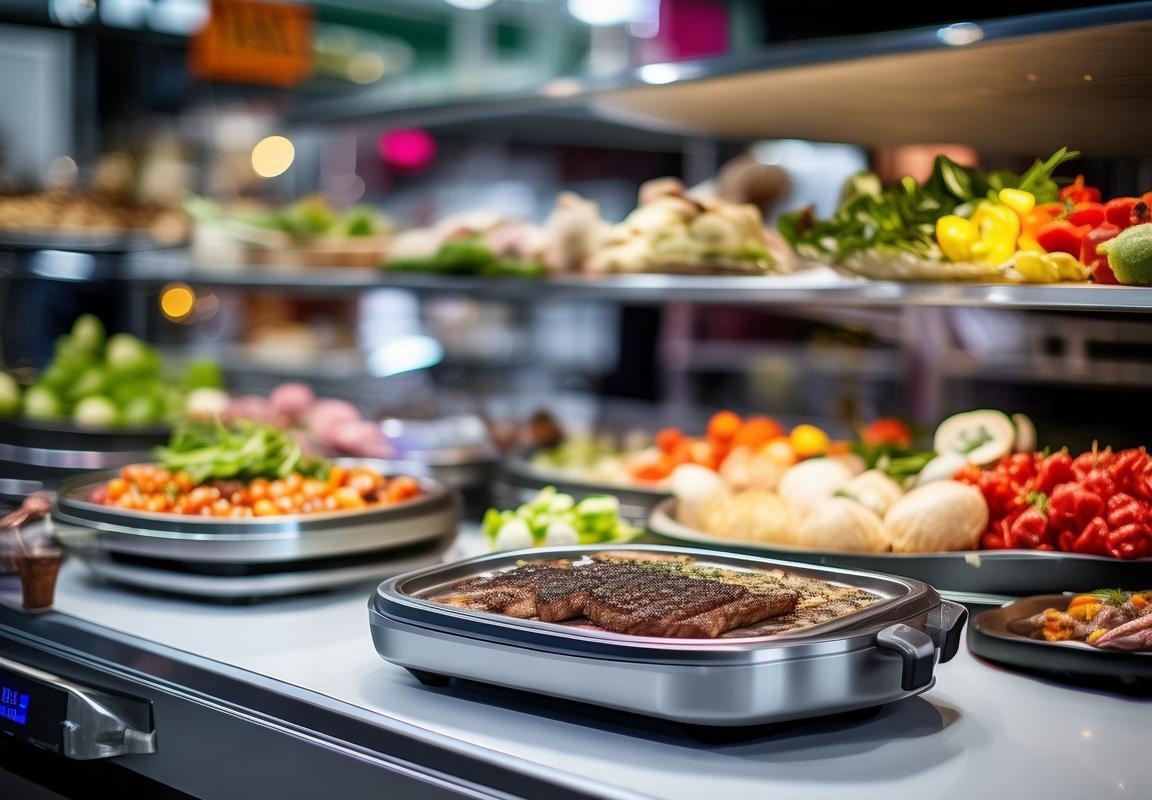
III.KeyPlayersintheContactGrillIndustry
In the bustling world of contact grill manufacturing, several key players have emerged as industry leaders, each bringing their unique strengths and innovations to the market. These companies not only produce high-quality grills but also drive the trends and standards that shape the industry.
1. George Foreman
Established in 1994, George Foreman has become synonymous with the brand of the same name, a legend in the boxing world and an icon in the kitchen. Their contact grills are known for their even heating and the ability to cook food in half the time of traditional grills. The brand’s commitment to healthy cooking, with removable plates for easy cleaning, has made it a favorite among health-conscious consumers.
2. Hamilton Beach
Hamilton Beach, a household name in small kitchen appliances, has a strong presence in the contact grill market. Their grills are designed with ease of use in mind, featuring non-stick surfaces and programmable settings. The brand’s focus on affordability and practicality has helped it capture a significant share of the market, appealing to budget-conscious shoppers.
3. Breville
Breville, known for its high-end kitchen appliances, has made a name for itself in the contact grill segment with its sleek designs and advanced technology. Their contact grills often come with features like adjustable temperature controls and variable cooking modes, catering to both beginners and seasoned chefs. Breville’s emphasis on quality and innovation has positioned them as a premium choice in the market.
4. Cuisinart
Cuisinart, with its wide range of kitchen appliances, offers contact grills that combine functionality with durability. Their grills are often equipped with features like reversible plates and adjustable thermostats, allowing for versatile cooking options. Cuisinart’s reputation for reliable and user-friendly products has helped them maintain a loyal customer base.
5. Instant Pot
While primarily known for its multi-functional pressure cookers, Instant Pot has expanded its line to include contact grills. The brand leverages its expertise in creating appliances that simplify meal prep, offering contact grills that not only grill but also sear, sauté, and bake. This versatility has resonated with consumers looking for a single appliance to handle multiple cooking tasks.
6. Black & Decker
Black & Decker, a brand known for its durable and affordable power tools, has ventured into the kitchen appliance market with contact grills. Their products are designed with convenience in mind, featuring easy-to-use controls and often at a more accessible price point. This has made them a go-to brand for those seeking a no-frills cooking solution.
7. Calphalon
Calphalon, a name associated with premium cookware, has extended its reach into the contact grill market. Their grills are built with high-quality materials and offer superior heat distribution, ensuring consistent cooking results. Calphalon’s focus on durability and performance has made them a preferred choice for those who demand the best from their kitchen appliances.
8. Oster
Oster, a brand with a long history in kitchen appliances, offers contact grills that are both efficient and affordable. Their grills are designed to provide even cooking and easy cleanup, with features like non-stick surfaces and removable cooking plates. Oster’s commitment to delivering value has made them a trusted name in the market.
9. Sunbeam
Sunbeam, a well-known brand in small appliances, has a range of contact grills that cater to a broad consumer base. Their grills are known for their ease of use and reliability, with features like adjustable temperature settings and simple controls. Sunbeam’s focus on creating appliances that make cooking more enjoyable has earned them a place among top manufacturers.
10. Presto
Presto, known for its innovative and practical kitchen appliances, offers contact grills that are both efficient and budget-friendly. Their grills are designed with the consumer in mind, featuring features like even heat distribution and removable cooking surfaces for easy cleaning. Presto’s dedication to creating appliances that simplify cooking has helped them maintain a strong presence in the market.
These key players in the contact grill industry have set the stage for innovation and competition, offering consumers a wide range of options to suit their needs and preferences. Whether it’s the affordability of Black & Decker or the premium quality of Calphalon, each brand contributes to the dynamic growth of the contact grill market.

IV.ConsumerPreferences:WhatEuropeanandAmericanShoppersLookFor
Consumers in both Europe and America have evolved their preferences when it comes to contact grills. Here’s an exploration of what they’re looking for:
The quest for convenience is paramount. Shoppers are gravitating towards contact grills that offer quick cooking times and ease of use. Features like one-touch controls and pre-set cooking modes are becoming increasingly popular, as they cater to the busy lifestyles of many.
Quality materials and durability are top of mind for consumers. The demand for grills made with high-quality stainless steel or cast aluminum is on the rise, as these materials not only enhance the grill’s lifespan but also contribute to better heat distribution and even cooking.
Functionality extends beyond just cooking. Modern contact grills often come with additional features like drip trays, adjustable temperature settings, and even non-stick surfaces, which appeal to those who seek versatility in their kitchen appliances.
Health consciousness is a driving factor in consumer preferences. With a growing awareness of the health benefits of grilling over frying, consumers are seeking grills that allow for healthier cooking options, such as those with adjustable heat settings to control the level of char and fat splatter.
Sustainability is a consideration for many. Eco-friendly consumers are drawn to contact grills that are energy-efficient, with some models even featuring LED lights that reduce energy consumption compared to traditional incandescent bulbs.
Design plays a significant role in the purchasing decision. European and American shoppers appreciate contact grills that blend seamlessly into their kitchen decor, with sleek designs and finishes that complement their home’s aesthetic.
The inclusion of safety features is crucial. Grills with cool-to-the-touch handles, child safety locks, and easy-to-clean surfaces are highly favored, as they provide peace of mind and convenience for busy families.
Branding and reputation also influence consumer choices. Shoppers often turn to well-known brands that they trust, especially when it comes to appliances that they use frequently. A brand’s history of innovation and customer satisfaction can significantly sway purchasing decisions.
Price remains a sensitive factor. While consumers are willing to invest in a high-quality contact grill, they also look for value for money. This means seeking out models that offer a balance between performance, features, and cost.
Customization is catching on, with consumers showing interest in contact grills that can be personalized with additional accessories or attachments. Whether it’s a grill with a reversible cooking surface or one that can accommodate various cooking tools, the ability to tailor the grill to specific needs is becoming more appealing.
Lastly, customer reviews and word-of-mouth recommendations are powerful influencers. Shoppers often rely on the experiences of others when making their purchasing decisions, so positive feedback and high ratings can significantly impact the sales of a contact grill.
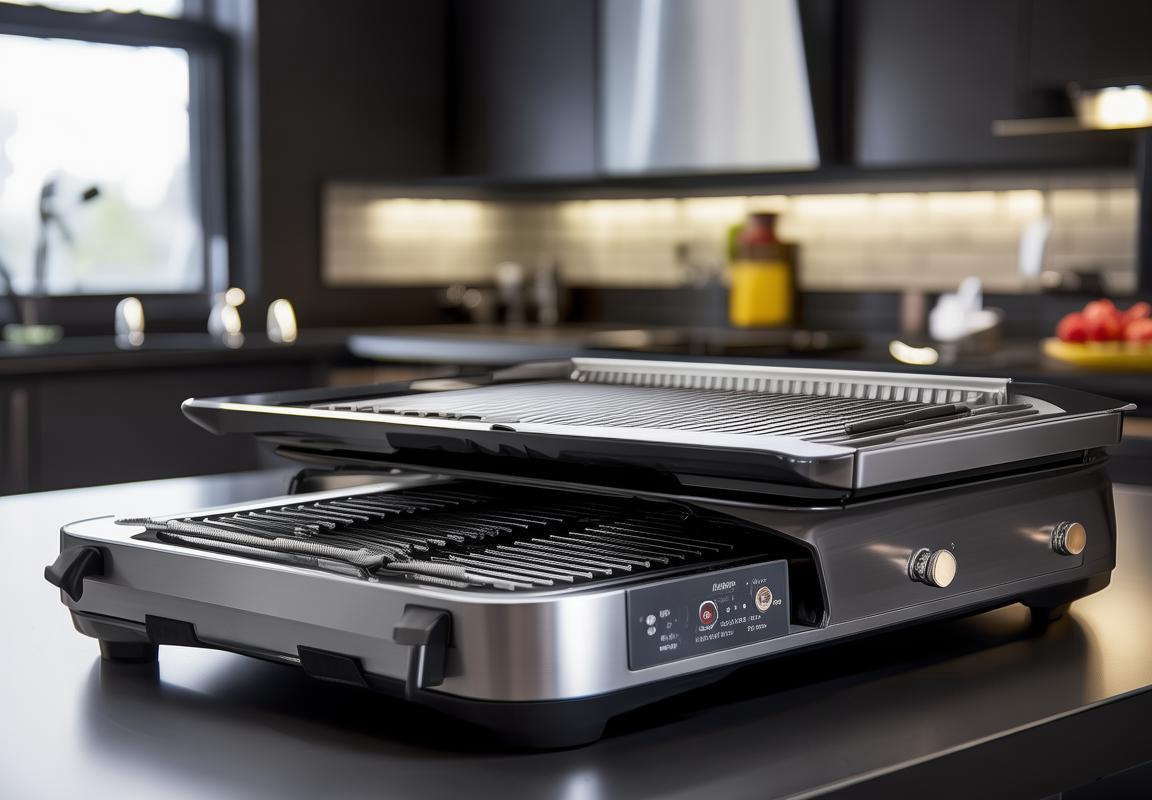
V.TechnologicalAdvancements:InnovationsShapingtheContactGrillMarket
In recent years, the contact grill market has witnessed a surge in technological advancements that have not only enhanced the cooking experience but also expanded the capabilities of these versatile kitchen appliances. Here’s a closer look at some of the key innovations that are shaping the contact grill market:
The integration of smart technology has become a hallmark of modern contact grills. With features like Bluetooth connectivity, users can now control their grills remotely using smartphones or tablets. This allows for precise temperature adjustments and cooking times, ensuring that the food is cooked to perfection every time.
One of the most significant technological breakthroughs in contact grills is the introduction of non-stick surfaces. These surfaces are not only easier to clean but also reduce the need for excessive oil, making the grills healthier options for cooking. Brands like George Foreman have been at the forefront of this innovation, offering a range of non-stick contact grills that are a favorite among health-conscious consumers.
The ability to lock in flavors and juices has always been a selling point for contact grills. However, recent innovations have taken this to a new level with the development of multi-layered cooking plates. These plates are designed to trap more flavor and moisture, resulting in more tender and juicy meats. The technology behind these plates often involves a combination of materials that create a unique cooking environment.
Safety features have also seen a considerable upgrade in the contact grill market. Modern grills now come with features like automatic shut-off, which turns off the appliance if it’s left unattended for an extended period. This not only prevents potential fires but also gives users peace of mind. Additionally, some models now include child safety locks, further enhancing the safety aspect of these appliances.
The convenience factor has been a driving force behind the popularity of contact grills. Innovations such as removable cooking plates have made cleaning and maintenance a breeze. Users can simply remove the plates and wash them in the dishwasher, saving time and effort. Some grills even come with reversible plates, offering versatility in cooking different types of food.
Another technological advancement is the inclusion of adjustable heat settings. Users can now choose from a variety of temperature levels to suit different types of food and cooking preferences. This allows for a more personalized cooking experience, where users can tailor the heat to their specific needs.
The integration of digital displays has also become a standard feature in many contact grills. These displays provide real-time temperature readings and cooking time, making it easier for users to monitor the cooking process. Some models even have built-in timers and alerts that notify users when the food is ready.
In the realm of energy efficiency, contact grills have made significant strides. Modern grills are designed to use less energy while still providing the same high-quality cooking experience. This not only benefits the environment but also saves users money on their energy bills.
Lastly, the customization of contact grills has become a trend. Some brands offer a range of accessories and attachments that can be used with their grills, such as grilling plates for vegetables, sandwich presses, and even waffle irons. This allows users to expand the functionality of their grills and enjoy a wider variety of dishes.
These technological advancements have not only improved the cooking experience but have also opened up new possibilities for contact grill manufacturers. As the market continues to evolve, we can expect to see even more innovative features that cater to the ever-changing preferences of consumers.
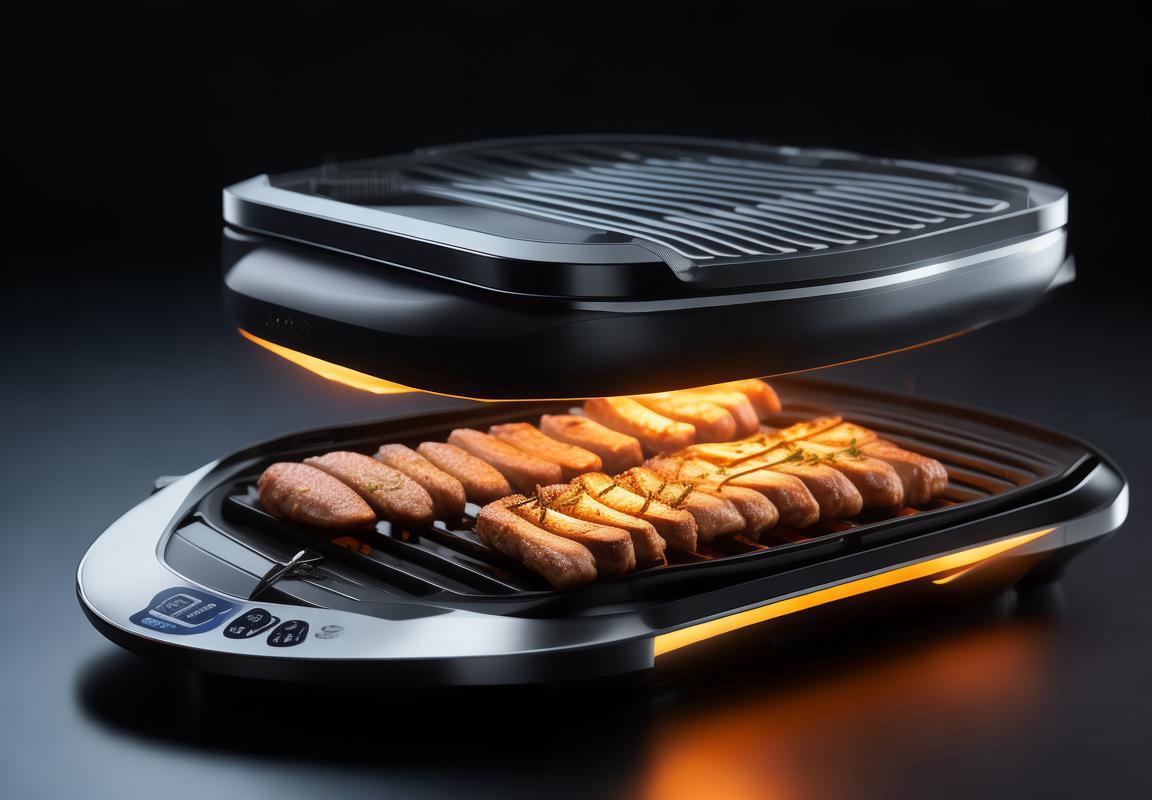
VI.DistributionChannels:HowContactGrillsReachConsumers
In the competitive landscape of the contact grill market, the way these appliances reach consumers is as crucial as the features they offer. Distribution channels play a pivotal role in ensuring that contact grills are not only available but also accessible to the target audience. Here’s a closer look at how these grills make their way to European and American homes.
Retail Stores: The Traditional OutletRetail stores remain a cornerstone in the distribution of contact grills. Supermarkets, department stores, and specialty kitchenware shops are common venues where customers can find a variety of models, from budget-friendly options to high-end units. These physical locations allow for hands-on demonstrations and comparisons, which can be a significant factor in the purchasing decision.
Online Marketplaces: A Growing PresenceThe rise of e-commerce has significantly expanded the distribution channels for contact grills. Online marketplaces like Amazon, eBay, and Wayfair have become go-to destinations for consumers seeking convenience and a wide selection. These platforms offer the added benefit of customer reviews, which can be invaluable for those looking for insights from fellow buyers.
Specialty Home Appliances RetailersFor those who are passionate about cooking and kitchen equipment, specialty retailers have gained a strong foothold. Stores that focus exclusively on kitchen appliances often carry a curated selection of contact grills, offering expert advice and personalized service. These retailers may also host cooking demonstrations and workshops, fostering a community of culinary enthusiasts.
Wholesale Distributors and ImportersBehind the scenes, wholesale distributors and importers play a critical role in the supply chain. They purchase contact grills in bulk from manufacturers and then distribute them to retailers and online marketplaces. This channel ensures that products are available in various regions and at different price points, catering to diverse consumer needs.
Direct-to-Consumer Sales by ManufacturersSome contact grill manufacturers have chosen to sell directly to consumers, bypassing traditional retail channels. This direct-to-consumer (D2C) model can offer advantages such as lower prices due to reduced middlemen, personalized customer service, and the ability to gather direct feedback from consumers.
Cookware and Kitchenware StoresContact grills often find their way into cookware and kitchenware stores, where they are displayed alongside other cooking accessories. These stores are frequented by individuals who are either looking to expand their kitchen toolset or seeking specific items to complement their existing cookware collection.
Gourmet and Health Food StoresAs health and wellness continue to trend, gourmet and health food stores have become a niche market for contact grills. These stores cater to consumers who are interested in cooking healthy, low-fat meals. The presence of contact grills in these establishments highlights the appliance’s versatility and appeal to health-conscious shoppers.
Cooking and Home Improvement StoresCooking and home improvement stores often have sections dedicated to kitchen appliances, where contact grills are showcased. These stores are visited by homeowners and renters alike, making them a strategic location for manufacturers to reach a broad demographic.
Specialty Cooking Equipment OutletsFor the most dedicated grill enthusiasts, there are specialty cooking equipment stores. These outlets are dedicated to all things grilling and offer a range of contact grills, as well as accessories and supplies. They serve as a hub for grillers to find everything they need under one roof.
Charity and Fundraising EventsOccasionally, contact grill manufacturers may partner with charities or participate in fundraising events to distribute their products. This approach not only helps in promoting the brand but also contributes to social causes, making the distribution process more meaningful and engaging.
Influencer and Affiliate MarketingSocial media influencers and affiliate marketers have become influential figures in the distribution of contact grills. These individuals often showcase products in their content, providing reviews and recommendations to their followers. Their endorsement can significantly boost sales and brand awareness.
Cooking Schools and Culinary EventsCooking schools and culinary events are another avenue through which contact grills are distributed. These platforms allow manufacturers to reach a community of food enthusiasts who are eager to learn and experiment with new cooking techniques and tools.
The distribution channels for contact grills are diverse and multifaceted, reflecting the various needs and preferences of consumers. Whether through traditional retail, online marketplaces, or direct sales, these channels ensure that contact grills are readily available to those looking to enhance their culinary experience.
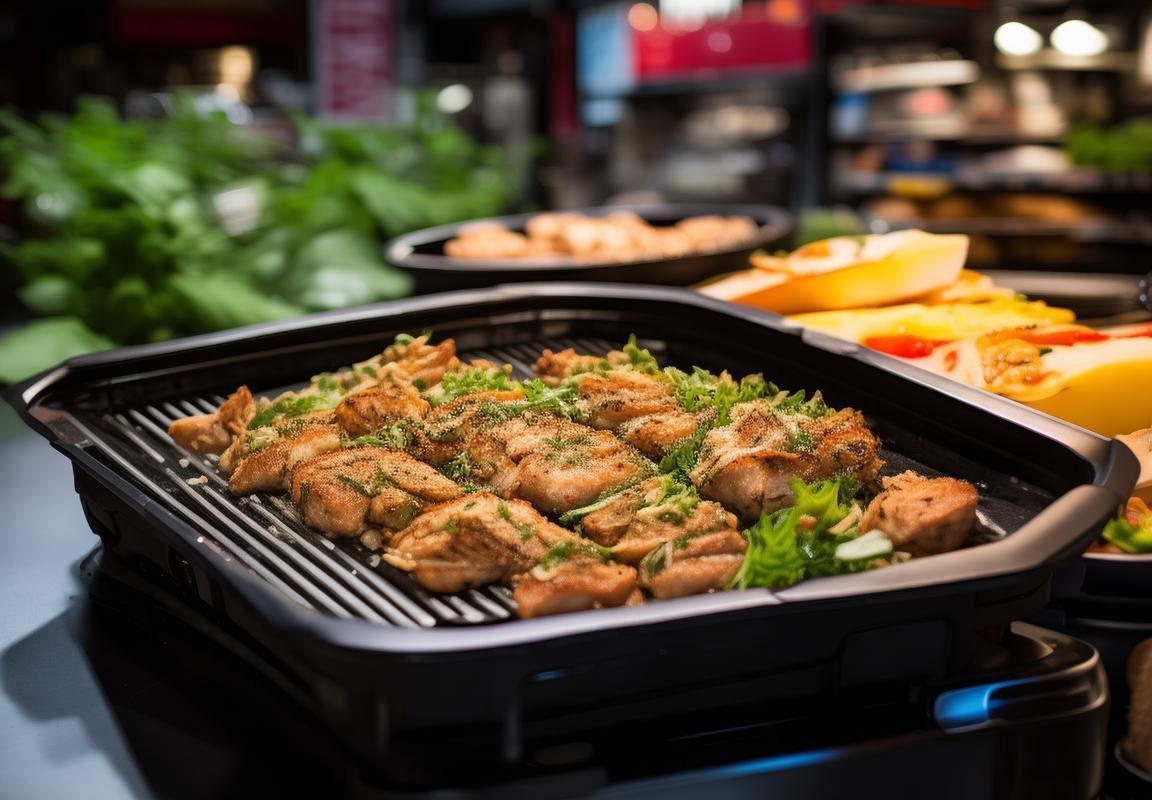
VII.ChallengesandOpportunities:ACloserLookattheContactGrillLandscape
In the ever-evolving landscape of the contact grill market, challenges and opportunities abound. Navigating these complexities is crucial for manufacturers looking to thrive in this dynamic sector.
Grill manufacturers face the challenge of keeping up with consumer demands that are becoming increasingly health-conscious. As such, offering low-fat, high-quality grilling options is essential. However, this also means investing in materials and technologies that can withstand high temperatures without imparting harmful substances into the food. Balancing performance and health benefits is a persistent challenge that requires innovative solutions.
On the flip side, the rise of outdoor living spaces has opened up a vast market for portable and compact contact grills. Consumers are increasingly seeking appliances that can be easily transported to picnics, camping trips, or even balconies. This demand has sparked opportunities for manufacturers to create new product lines and expand their market reach.
The competitive nature of the contact grill market is another challenge. With numerous brands vying for market share, manufacturers must differentiate their products through unique features or branding. This competition can lead to rapid innovation and improvements, but it also demands a keen understanding of market trends and consumer preferences.
Sustainability has emerged as a significant opportunity for contact grill manufacturers. As consumers become more environmentally aware, there is a growing preference for eco-friendly products. This includes the use of recycled materials, energy-efficient designs, and packaging that is recyclable or biodegradable. Adapting to these sustainable practices can not only appeal to eco-conscious consumers but also position brands as leaders in social responsibility.
The integration of smart technology is another opportunity that contact grill manufacturers are exploring. Smart grills with connectivity features allow users to monitor and control their cooking process remotely. This technology not only enhances convenience but also provides users with valuable data about their grilling habits, which can lead to improved cooking techniques and more efficient energy use.
Regulatory compliance is a challenge that all manufacturers must address. Food safety regulations are stringent, and any lapses can lead to costly recalls or reputational damage. Ensuring that all products meet these standards is a critical concern, but it also presents an opportunity to educate consumers about safe grilling practices and the importance of quality control.
The rise of e-commerce has significantly impacted the contact grill market. Online sales have become a significant distribution channel, offering manufacturers the chance to reach a broader audience without the constraints of physical store locations. However, this channel also requires a robust digital marketing strategy to capture the attention of online consumers who are bombarded with advertisements.
The global pandemic has accelerated the shift towards contactless solutions in many industries, and the contact grill market is no exception. While this shift presents challenges in terms of consumer behavior and safety concerns, it has also led to the development of grill designs that minimize direct contact, such as touchless controls and self-cleaning features.
In summary, the contact grill landscape is marked by a blend of challenges and opportunities. From the need to innovate in health and sustainability to adapting to new distribution channels and consumer expectations, manufacturers must remain agile and forward-thinking to succeed. By embracing these opportunities and addressing the challenges head-on, the contact grill market is poised for continued growth and innovation.
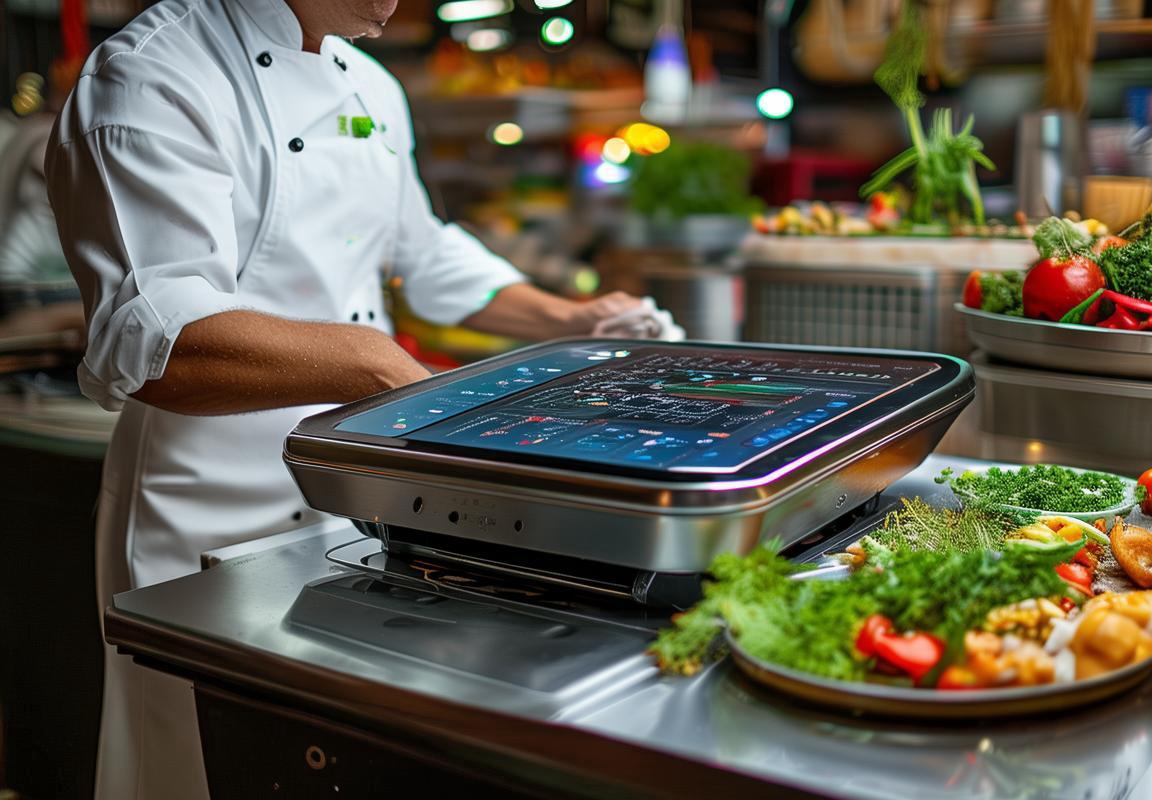
VIII.CaseStudies:SuccessStoriesfromContactGrillManufacturers
In the world of contact grill manufacturing, several success stories have emerged, showcasing the ingenuity and resilience of companies in this niche market. Here are a few tales of triumph that highlight the strategies and innovations behind these successful ventures.
The story of GrillGuru began with a simple observation: many consumers were dissatisfied with the inconsistent cooking results they experienced with traditional grills. The founders, recognizing the potential for a more precise and even cooking method, developed a contact grill that offered a unique combination of heat distribution and ease of use. By focusing on user experience and incorporating smart technology, GrillGuru quickly gained a loyal following.
One of the key factors in GrillGuru’s success was their commitment to quality. They sourced high-grade materials and employed rigorous quality control measures to ensure that each grill met their stringent standards. This focus on excellence translated into a product that not only performed well but also stood out in a crowded market.
Another standout story is that of HeatWave Grills, which started as a small, family-owned business. The founders, both avid grillers themselves, were frustrated with the lack of control over cooking temperatures. They set out to create a contact grill that allowed users to precisely regulate heat, which was a significant departure from the traditional, one-temperature setting grills.
HeatWave’s innovation was not just in the technology but also in their marketing approach. By leveraging social media and influencer partnerships, they were able to create a buzz around their product. The result was a surge in sales, with customers eager to experience the level of control that HeatWave offered.
In the competitive landscape of contact grill manufacturing, it’s not uncommon for companies to face challenges. One such challenge was encountered by EasyGrill, a company that initially struggled to gain traction due to the high cost of their premium models. However, they turned this challenge into an opportunity by diversifying their product line.
EasyGrill introduced a range of models, from budget-friendly to high-end, catering to different consumer segments. This strategy allowed them to reach a broader audience and capture more market share. The variety in their product offerings also helped them adapt to changing consumer preferences and economic conditions.
The success of these companies can be attributed to several key factors. One is the ability to listen to the needs of the consumer. For instance, ProGrill, a relative newcomer to the market, noticed a trend towards healthier eating habits and developed a contact grill that could cook with less oil, making it a healthier option for those looking to reduce their fat intake.
Another factor is the willingness to invest in research and development. By continuously improving their technology and design, ProGrill was able to stay ahead of the curve and capture the attention of consumers who value innovation and performance.
Customer service also plays a crucial role in the success of contact grill manufacturers. Take the case of QuickCook Grills, which prides itself on exceptional customer support. They offer a lifetime warranty on their products and have a dedicated team to assist customers with any issues they may encounter. This commitment to customer satisfaction has helped QuickCook build a strong reputation and a loyal customer base.
In conclusion, the success stories from contact grill manufacturers highlight the importance of innovation, quality, market segmentation, and customer service. By understanding the needs of their target audience and adapting to market trends, these companies have managed to carve out a niche for themselves in a competitive industry. Their stories serve as inspiration for new entrants and a testament to the potential for growth and success in the contact grill market.
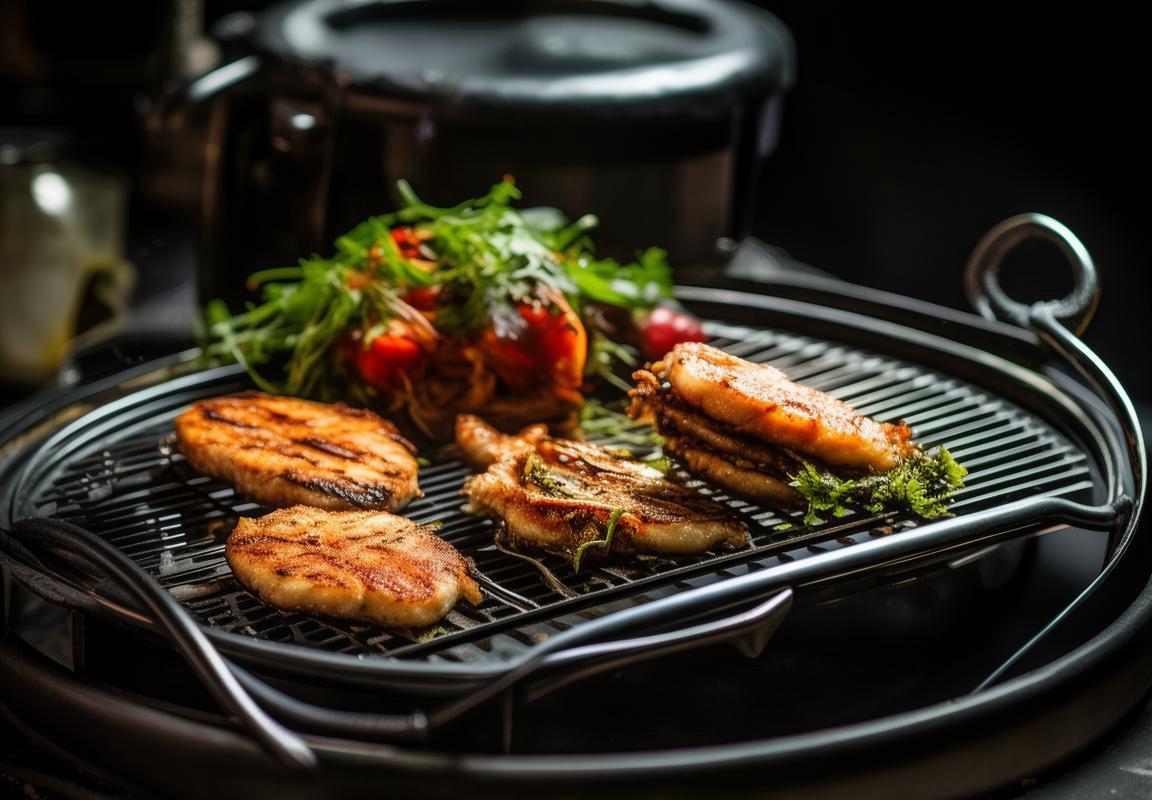
IX.TheFutureofContactGrills:PredictionsandProspects
The market for contact grills has been heating up, and as consumers seek convenience and quality in their kitchen appliances, these devices are becoming more popular than ever. Let’s delve into some of the key predictions and prospects shaping the future of contact grills.
Grill manufacturers are investing heavily in research and development to make their products more energy-efficient, durable, and user-friendly. Innovations such as non-stick surfaces, adjustable heat settings, and even Wi-Fi connectivity are becoming standard features, appealing to tech-savvy consumers who demand more from their appliances.
One trend that is likely to continue is the rise of compact and portable contact grills. With busy lifestyles and smaller living spaces, consumers are gravitating towards products that offer versatility without compromising on performance. The ability to cook outdoors or indoors, in a small apartment, or even in a dorm room, is a significant selling point.
Sustainability is another factor that is influencing the future of contact grills. As environmental concerns grow, manufacturers are looking for ways to reduce their carbon footprint. This could mean using recycled materials, reducing packaging waste, or developing grills that use less energy. Consumers who are conscious of their impact on the planet are more likely to support brands that prioritize sustainability.
Smart features are also becoming a crucial part of the contact grill market. The integration of Bluetooth and smart apps allows users to monitor their cooking process remotely, set timers, and even receive notifications when the grill is preheated or the food is ready. These innovations not only make grilling easier but also cater to the desires of today’s consumers who want appliances that can integrate seamlessly into their digital lives.
Health-conscious consumers are driving the demand for contact grills that can cook with less oil. This has led to the development of new technologies, such as advanced non-stick coatings and adjustable temperature controls, which help to reduce the amount of fat in grilled meals. As the health benefits of grilling become more widely recognized, the market for contact grills that promote healthier eating habits is expected to grow.
The market for contact grills is also being influenced by cultural trends. As international cuisine continues to blend and inspire local cooking styles, consumers are looking for grills that can replicate the flavors of different cuisines. From teppanyaki-style cooking to Korean BBQ, contact grills that offer a variety of heat settings and surfaces are likely to find a niche in diverse markets.
Another opportunity for growth lies in the premiumization of the contact grill market. High-end models with advanced features, superior materials, and elegant design are becoming increasingly popular. These grills are often targeted towards gourmet enthusiasts and chefs who appreciate the finer details in their kitchen equipment.
In terms of geographic trends, the demand for contact grills is expanding globally. While the United States and Europe have traditionally been the leading markets, there is a growing interest in Asia and South America. As these regions become more affluent and consumer awareness of healthy cooking methods increases, the market for contact grills is poised for significant growth.
Despite the opportunities, there are challenges to navigate. Competition is fierce, and manufacturers must continually innovate to stay ahead. Additionally, safety concerns related to cooking appliances remain a top priority, especially as new technologies are introduced. Brands that prioritize safety, offer exceptional customer service, and maintain high product quality will be well-positioned to thrive in the dynamic contact grill market.
The future of contact grills is bright, with a blend of technological advancements, changing consumer preferences, and global market growth driving the industry forward. As manufacturers continue to innovate and adapt to consumer needs, the contact grill market is expected to reach new heights in the coming years.
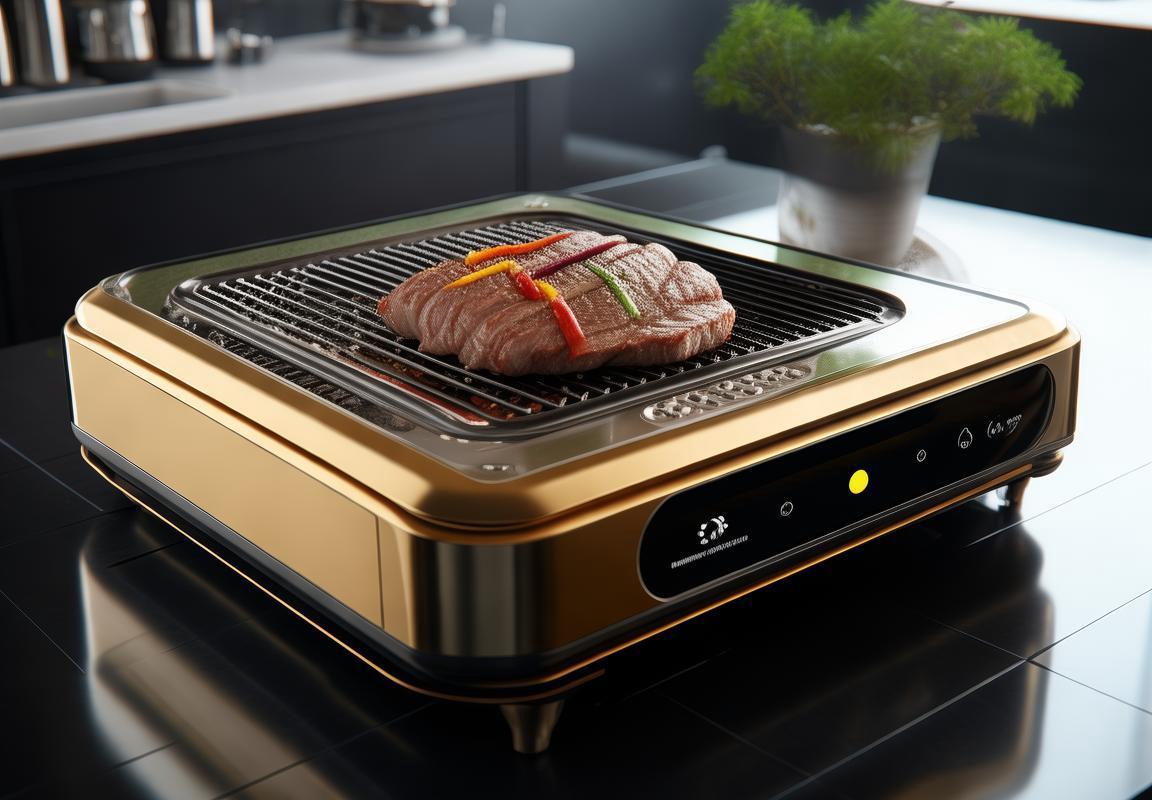
X.Conclusion:TheContactGrillManufacturer’sGuidetoNavigatingtheMarket
As the contact grill market continues to grow, it’s clear that navigating this landscape requires a keen understanding of consumer behavior, distribution channels, and the challenges and opportunities that come with innovation. Here are some key insights to consider for manufacturers looking to succeed in this dynamic market:
Understanding the market dynamics, we see a surge in demand for contact grills, not just as a cooking tool, but as a centerpiece for healthy and convenient home meals. Brands that offer innovative features and cater to health-conscious consumers are likely to see a competitive edge.
In terms of distribution, partnerships with major retailers and online marketplaces have become pivotal. With the rise of e-commerce, direct-to-consumer sales are also gaining traction, offering manufacturers new ways to connect with their customers.
Challenges like ensuring product safety, complying with health regulations, and adapting to market trends require strategic planning. Yet, opportunities like the growing preference for smart appliances and the expanding international market can be harnessed to expand business horizons.
Brands like Weber, George Foreman, and Breville have not only thrived but have set the benchmark for innovation and quality. Their case studies serve as a testament to how a strong focus on consumer needs, relentless pursuit of quality, and smart marketing can lead to enduring success.
Looking ahead, the future of contact grills is bright, with predictions indicating continued growth driven by technological advancements and changing consumer preferences. As manufacturers strategize their path forward, it’s essential to remain agile and adaptable to these shifts.
To wrap up, here are some key takeaways for contact grill manufacturers looking to navigate the market effectively:
-
Embrace Health and Wellness: Consumers are increasingly seeking healthier cooking options, so focusing on low-fat, non-stick surfaces, and healthy cooking tips can attract a wider audience.
-
Invest in Technology: Integrating smart features, such as Bluetooth connectivity and recipe suggestions, can enhance the user experience and appeal to tech-savvy consumers.
-
Enhance User Experience: From intuitive designs to easy-to-clean features, prioritizing ease of use and convenience can make a brand stand out.
-
Leverage E-commerce: With the digital landscape expanding, having a strong online presence and engaging e-commerce strategy is crucial for reaching a global audience.
-
Stay Compliant and Safe: Ensuring that products meet all safety standards and regulatory requirements is non-negotiable, especially in the health-conscious market.
-
Foster Brand Loyalty: Through quality products, excellent customer service, and engaging brand stories, manufacturers can build a loyal customer base.
-
Explore New Markets: Look beyond traditional sales channels to new international markets that may have untapped potential for contact grills.
-
Monitor Industry Trends: Keeping abreast of industry trends and consumer demands is crucial for staying relevant and competitive.
-
Collaborate and Innovate: Partnering with other brands, chefs, and influencers can lead to innovative collaborations and expand brand reach.
In conclusion, the contact grill market offers a wealth of opportunities for manufacturers willing to invest in quality, innovation, and a deep understanding of consumer needs. By adapting to market dynamics and remaining committed to excellence, these manufacturers can continue to drive the future of contact grill sales.